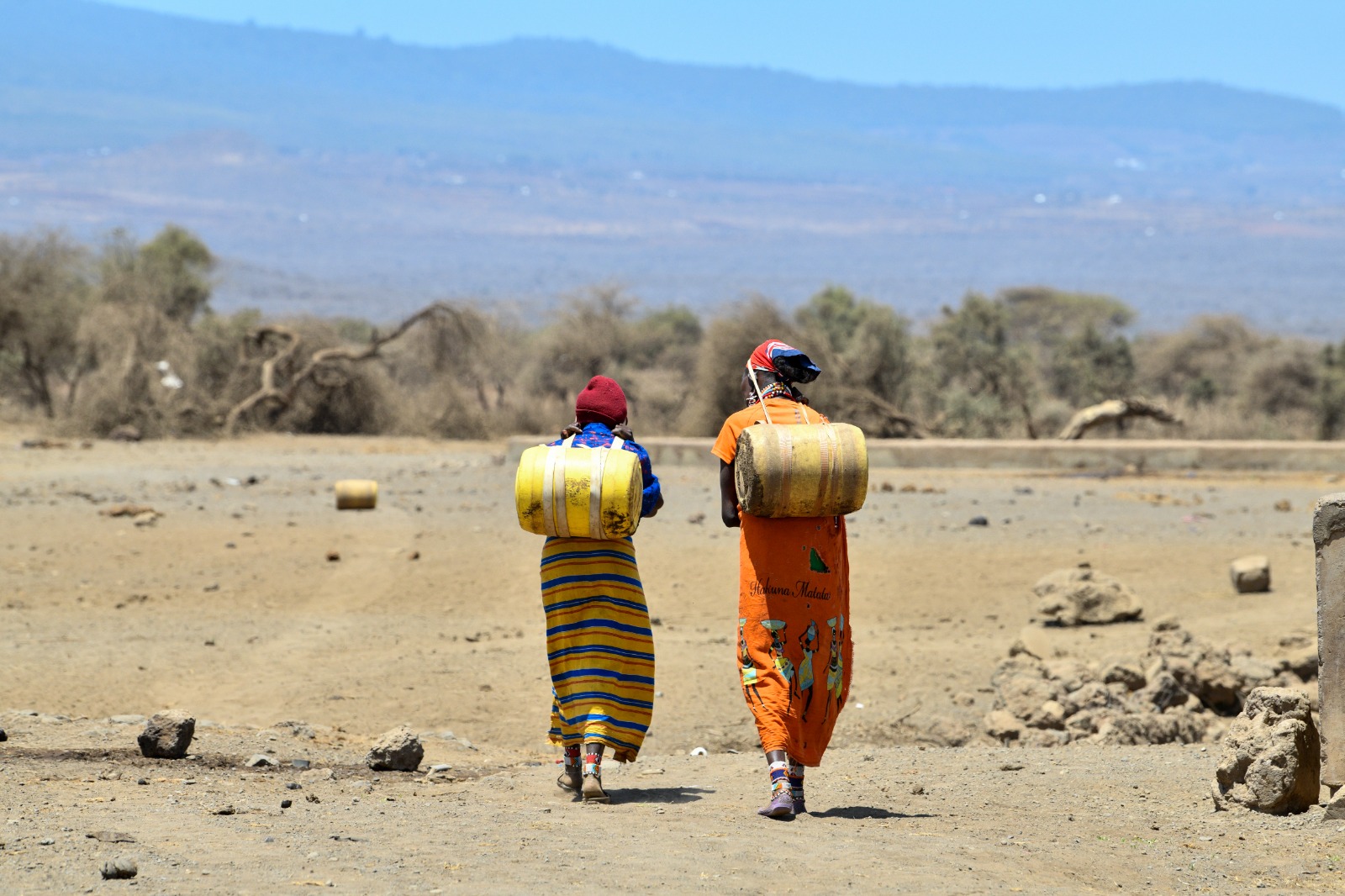In the heart of the Ilmarba community in Kajiado County where wildlife roams freely, the harmony between humans and animals can sometimes be disrupted, leading to what is known as human-wildlife conflict.
This multi-faceted issue has profound consequences, impacting local communities and the younger generation.
At Olmoti Day and Boarding Comprehensive School, Dominic Kyalo, a senior teacher, paints a vivid picture of the blurred boundary between human habitation and wildlife territory in the area.
Kyalo, now in a sombre mood, recounts how learners encounter elephants as they trek to school.
“Some learners who come from far away have to walk 14 kilometres to and from school. They sometimes encounter elephants and have to wait for them to pass. You cannot even punish learners for coming to school late because you know what it takes for them to get there,” he adds.

With a glimmer of pride, Kyalo acknowledges that partners in 2021 installed a solar-powered borehole which has emerged as a beacon of hope amidst these challenges.
“Learners in the school before 2021 used to trek long distances to fetch water mostly for domestic use. This, especially for young girls, was detrimental as they dropped out of school because they simply could not make the trek to fetch water and still attend class. This led to the school’s numbers swiftly dwindling over time to only 250 learners. After the water was installed, numbers have steadily improved to 600 learners, including boarders,” he said.
The school spread across 32 acres of land, now boasts two water points and an electric fence to minimize the effects of conflict within the school premises.
It has also spearheaded conservation efforts by establishing a tree nursery and a kitchen garden.
Powered by the abundant energy of the sun, this innovative water source implemented by WWF-Kenya, the Kenya Wildlife Service, and Ogulului Group Ranch has not only provided the community with a reliable supply of water but has also transformed the dynamics of human-wildlife interactions.

The project received funding from The German Federal Government and the Otto Fund.
Joshua Mutengere, a beneficiary of the project, expresses gratitude for the solar-powered borehole, which has brought water closer to their homesteads.
Mutengere recalls how, before 2021, the community relied on a diesel generator to pump water from a borehole drilled in the 1980s.
“The pump we used at this point was not only unsustainable but unreliable due to frequent breakdowns. The cost of running the pump was high because we had to buy diesel and hire transport to Loitokitok, about 50km away,” he said.
According to Mutengere, breakdowns of the pump often forced community members to trek at least 15km to the nearby Lake in Amboseli National Park to fetch water.
“Women and girls would often bear the brunt of this hardship because they would have to make at least two trips often crossing wildlife habitats to fetch adequate water for domestic use. This left them with very little time to attend school or do gainful work,” he added.

Mutengere also pointed out that the men would be embroiled in conflict with Amboseli Park rangers because of breaking the park rules.
The men, he said, would sneak into the Park for their livestock to quench thirst, especially during dry seasons and extend their stay. They often also lost their flock to wild animals such as hyenas and lions because they would many at times leave them after darkness fell.
“With the solar-powered borehole, the conflict between community members and animals competing for limited resources, particularly during the dry season when water sources became scarce, has become a thing of the past,” he said.
Ilmarba community borehole chairman Nelson Tinayo underscores the significant difference in the cost of running a diesel-powered generator compared to a solar-powered borehole.
“We used to charge Ksh 100 for a cow and Ksh 20 for a goat to access water every month. The cost of ferrying diesel from here to Loitokitok is expensive. Hiring a car to ferry diesel costs Ksh 10,000 while a litre of Diesel costs Ksh 197. We could sometimes only afford to buy 600 litres, which didn’t make sense in the long run,” he said.
Tinayo highlights how after the solar installation, charges were reduced, to Ksh 30 for a cow and Ksh 5 for a goat to access water while women buy water for as little as Ksh 30, compared to the previous cost of Ksh 100.
Approximately, Tinayo says the borehole now serves 500 households, 5,000 cattle, and 7,000 goats, with wildlife also benefiting from a trough put up at the edge during dry seasons.
World Wide Fund for Nature Kenya programmes coordinator Amboseli-Chyulu sub-landscape Dr John Kioko said that this innovative approach not only ensures that the community’s water needs are met sustainably but also alleviates the pressure on natural water sources within wildlife habitats.
Kioko, in addition, said that the community-led project which cost Ksh 3.5 million serves as a designated water source for both humans and animals alike to minimize the likelihood of conflicts arising due to competition for resources.
“The Amboseli ecosystem is about 5,000 km2 and about 90 per cent of it is largely semi-arid. Most of the water in the landscape comes from the park’s wetlands, which are formed through springs whose origin is the North of Mt. Kilimanjaro.”
Through participatory decision-making processes, community members have been involved in the planning and management of the borehole, fostering a sense of ownership and stewardship over this vital resource.

The Ilmarba solar-powered borehole stands as a testament to the power of innovation and collaboration in reshaping the narrative of human-wildlife coexistence.
By harnessing the sun’s energy to sustainably meet the water needs of both humans and animals, this transformative solution offers a glimpse into a future where communities and wildlife thrive in harmony, united by a shared vision of coexistence and conservation.






















